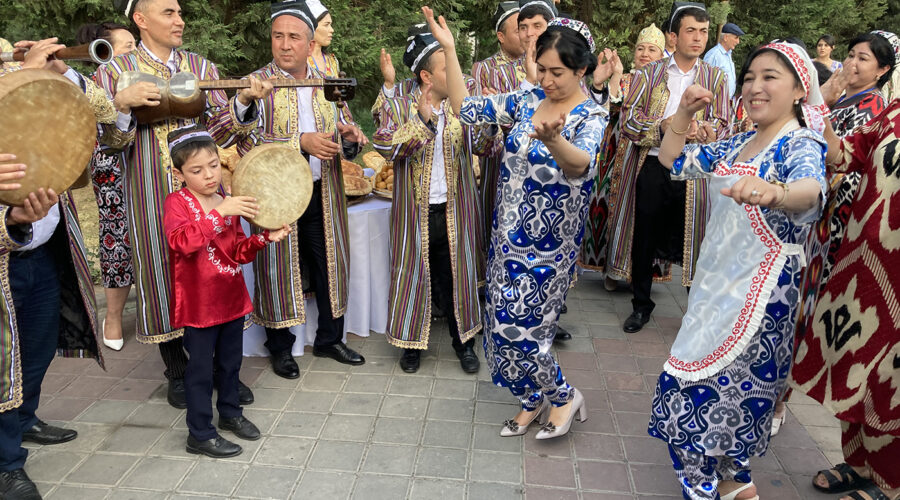Over the years, Tajikistan has been actively promoting the Water Action Agenda – a key result of the United Nations 2023 Water Conference – which calls for universal water and sanitation access. But in spite of that, lack of access to clean drinking water continues to be a major issue in rural areas of the Central Asian nation. That is why Dushanbe seeks to establish closer ties with global financial institutions, aiming to receive help to resolve one of the burning issues for the country of around 10 million people.
It is, therefore, no surprise that leaders of the World Bank, Asian Infrastructure Investment Bank, as well as the Islamic Development Bank, were among major guests of the Dushanbe Water Process, held in the Tajik capital on June 10-13. The goal of the conference, co-organized by the Tajik government and the United Nations, was to promote the role of water in sustainable development.
 “Rational and sustainable use of water resources has been identified as one of the priorities of our state policy,” said Tajikistan’s President Emomali Rahmon at the plenary session of the Dushanbe Water Process, pointing out that the key role of the landlocked Central Asian state is to “promote the agenda of water and climate at the international level.”
“Rational and sustainable use of water resources has been identified as one of the priorities of our state policy,” said Tajikistan’s President Emomali Rahmon at the plenary session of the Dushanbe Water Process, pointing out that the key role of the landlocked Central Asian state is to “promote the agenda of water and climate at the international level.”
Although Tajikistan has high global ambitions when it comes to the water management issue, the authorities in Dushanbe also seem to be very focused on resolving regional water disputes. According to Rahmon, his country seeks to “further strengthen regional cooperation in Central Asia and resolve the pressing water issues through constructive dialogue.”
He was likely to have been indirectly referring to sporadic clashes at the border between Tajikistan and Kyrgyzstan – both being nominal allies in the Russian-led Collective Security Treaty Organization (CSTO) – that seasonally take place due to water disputes between the two countries. Also, the Taliban-led construction of the Qosh Tepa canal threatens to divert a significant amount of water from the Amu Darya, a transboundary river that Tajikistan, Uzbekistan, and Turkmenistan heavily depend on.
Given that Central Asia relies heavily on shared water resources for its socio-economic development, Dushanbe’s ambition was to bring together regional energy leaders to discuss stability and climate-resilient development of their countries. The major focus of the summit in the Tajik capital was on improving water and climate dialogue among the Central Asian states, although at the same time Tajikistan sought to improve its image in the international arena.
That is why the Tajik authorities invited representatives from 68 countries and over 60 organizations to take part in the forum, and also to participate in the Water and Glacier Festival – an event whose goal was not only to promote Tajikistan as a country of 947 rivers and more than 8,000 glaciers, but also to highlight the Tajik culture.
Although there were very few political statements at the water conference in Dushanbe, the fact that major speakers and moderators at various sessions were the European Union’s and the United States’ officials, indicates that Tajikistan aims to establish close ties with the West. That, however, does not mean that the former Soviet republic, unlike some other Central Asian states, aims to distance itself from Moscow.
Russian was one of the official languages of the conference, Russian business leaders attended the event, and the Russian Embassy to Tajikistan also participated in the Water and Glacier Festival. Still, the highest-ranked guests at the Dushanbe Water Process were leaders of several African countries, which suggests that Tajikistan seeks to strengthen its position in the Global South.
Such an approach does not look surprising given that most developing countries face similar problems in managing water resources. But Tajikistan sees its advantage in ranking the first in Central Asia in terms of water resources. As such, it hopes to develop its green energy sector, and potentially increase the export of electricity to countries such as Afghanistan, Uzbekistan, and Kazakhstan.
In order to achieve that goal, the authorities will have to complete the construction of the Rogun hydroelectric power plant, a strategically important facility for Tajikistan, as well as for neighboring countries. The water conference in Dushanbe undoubtedly served not only as a platform for energy policy discussions, but it also gave the Tajik energy officials an opportunity to look for potential partners who might be willing to invest in the world’s tallest dam.
One thing is for sure: the event helped Tajikistan strengthen its multi-vector diplomacy amid various challenges – be they economic, security or political – the Central Asian nation is facing.
Images: Nikola Mikovic

